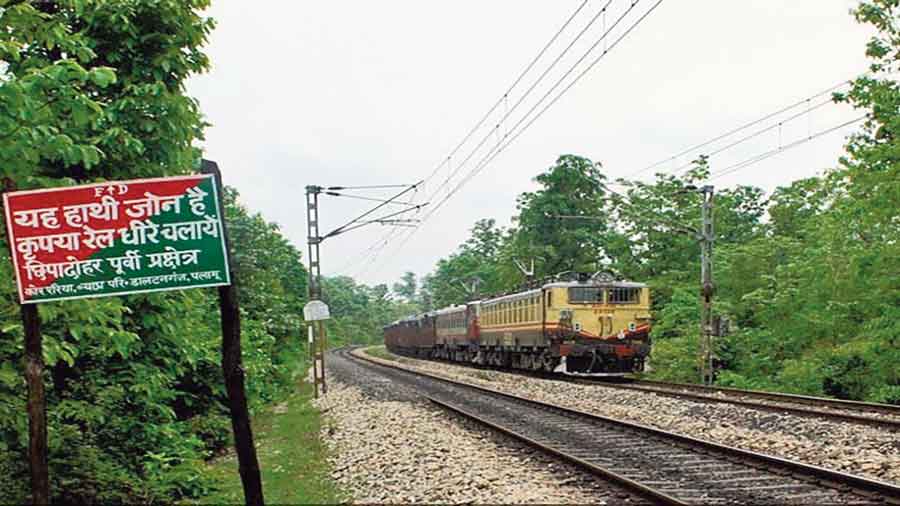Wildlife in a part of the core area of Palamau Tiger Reserve (PTR) in Jharkhand continues to be vulnerable to train accidents.
A herd of elephants was saved from being hit by a running train within the PTR core area a week ago but the animals may not be so lucky every time.
On seeing a herd of about a dozen elephants, including calves, on a railway track on August 26, the alert drivers of Jabalpur-Howrah Shaktipunj Express saved the herd from being hit by their train by applying emergency brakes on time.
But that may not happen every time and there were, in fact, cases in the past when animals were killed by running trains along that stretch.
Wildlife is vulnerable to such accidents as elephants and deer freely move around there and often cross the railway track that passes through the core area.
There is a 12km stretch of the double-line railway track between Chipadohar and Hehegara stations under the Dhanbad division of East Central Railway that passes through the core area of PTR.
Moreover, the railway authorities wanted to construct an extra track there as a part of laying a 291km-long third line between Patratu and Sonenagar that they considered essential for operational reasons such as faster transportation of coal and also facilitating a feeder route.
The Jharkhand government objected to the proposal of laying the third line within the core area of PTR. It referred the matter to the National Tiger Conservation Authority that, in turn, formed a committee for an in-depth study and also preparation of a draft on wildlife management issues and mitigation measures.
Following this, the state government suggested shifting the exiting double-line track to a safer location about 2km away just outside PTR limits, but the railways did not accept that suggestion so far.
“That would help both,” said PTR deputy director Kumar Ashish, explaining that wildlife could move around freely without the risk of getting hit by trains while the railways can also run trains faster without adhering to the present speed limit of 25km per hour within PTR core area.
The matter was also listed for discussion at a meeting of the project monitoring group of the department of promotion of industries and internal trade under the Union ministry of commerce and industries in New Delhi in January last year (2021), but no solution was found.
The railways objected to shifting the track at the suggested location as it is near a river, it is reliably learnt.
“But there is nothing rigid about that and an alternative location can also be finalised through mutual agreement,” Ashish said when asked.
But senior officials of the railways and state government, including those from PTR, have to visit the place together to discuss and find a solution, he further said.
“No decision can be taken unless both the parties sit together and work out a solution,” Ashish further said, adding no joint meeting could be held in nearly two years now.










